




Introduction to Base of a Shape in Geometry
Although the term “base” is used in different Mathematical contests, here, we will understand the meaning of “base” in terms of Geometry. The base of an object is generally observed as a side or face upon which the object generally rests. It is best described as the “bottom” of the shape. Remember, the base of a shape is not only limited to its bottom sides or faces but is often paired with a height that is perpendicular to the base. This is applicable in both 2-D and 3-D figures.
Read the article to understand the base of a shape in a better way.
Base of a Shape Definition
The base of a shape is defined as the surface, a solid object stands on or rests upon. Also, the base is considered the bottom line of a shape such as a triangle.
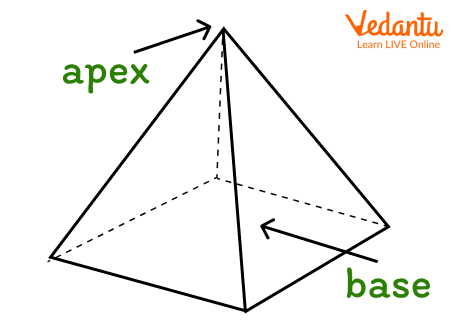
But, the top is also considered as a base when it is parallel to the bottom.
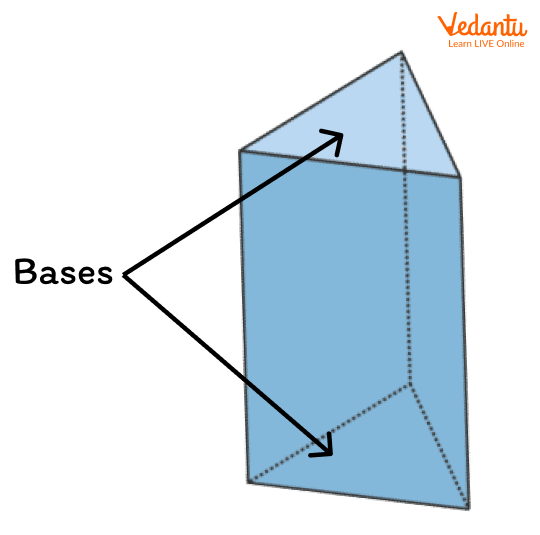
Base of Two-Dimensional Object
Let’s observe where the base is found in different 2-d shapes.
The blue line in the following 2-D shapes represents the “Base” of the respective shapes.

The sides of 2-d shapes are also considered as base if the base and its corresponding height are perpendicular to each other. Look at the image below to understand precisely.

Sometimes, the base of the shape needs to be extended to form its associated height.
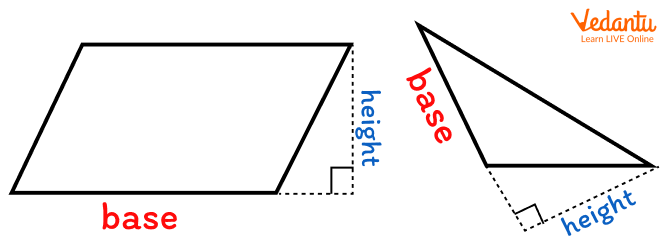
Base of Three-Dimensional Object
The grey line in the following 2-D shapes represents the “Base” of the respective shapes.

Similar to 2-D shapes, other sides or faces are also considered as the base.
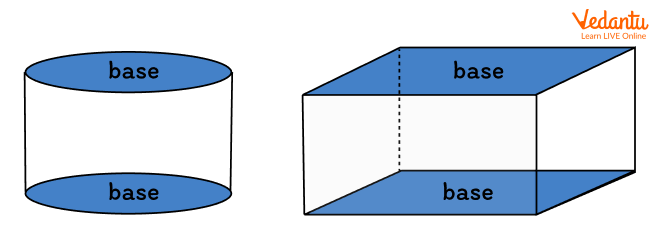
Base of a Shape Examples
A triangle is a polygon with three sides. Any side of a triangle can be considered as its base while calculating its area. Once we choose the base of a triangle, there is only one line segment that represents its corresponding height.
The base of a cone is the plane surface of a solid shape; the other face or side is a curved surface.
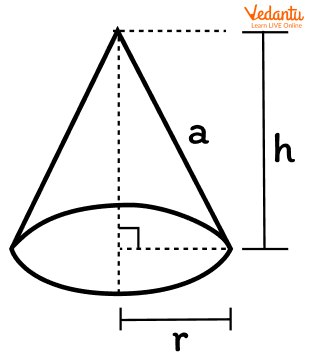
A trapezoid has two bases, one small base (b) at the top and one large base (B) at the bottom.
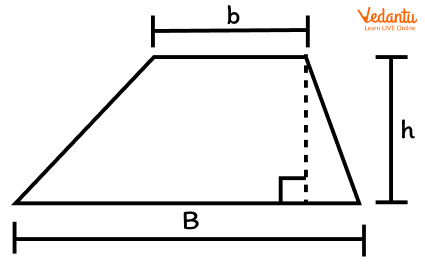
Conclusion
In short, the base is the surface upon which a solid object rests. A solid object may have one or more than one bases. For example, the prism has 2 bases. One base is at its top and the other at its bottom. Both are parallel to each other. Understanding the concept of the base is very important for kids as it is one of the fundamental concepts of Geometry. This will help to understand the complex geometrical concepts easily in higher classes.
FAQs on The Base of a Shape: What is Base in Geometrical Shape?
1. What is the base of a geometrical shape?
In geometry, the base of a shape is the side or face on which it is considered to stand. For a 2D shape like a triangle, the base is one of its sides, typically the bottom one. For a 3D shape like a pyramid or a prism, the base is the flat surface or face on which the object rests. For instance, the base of a cuboid is a rectangle.
2. What is the difference between the base of a 2D shape and a 3D shape?
The main difference lies in their dimension. The base of a 2D shape is a one-dimensional line segment, while the base of a 3D shape is a two-dimensional flat surface.
2D Shape Base: It is a side (a line). For example, in a triangle or a trapezoid, the base is a length used to calculate area.
3D Shape Base: It is a face (a 2D shape like a square or circle). For example, the base of a cylinder is a circle, and its area is used to calculate volume.
3. Does the 'base' of a shape always have to be at the bottom?
No, this is a common misconception. While we often visualise the base as the bottom part, any side of a 2D shape or face of a 3D shape can be chosen as the base depending on its orientation. For example, if you lay a triangle on any of its three sides, that side becomes the base. The height is then always measured perpendicularly from the base to the opposite vertex.
4. Why is it important to identify the correct base of a shape in geometry?
Identifying the correct base is crucial for calculating a shape's properties, such as its area or volume. Many fundamental geometric formulas directly rely on the base measurement. For example:
The area of a triangle is calculated as ½ × base × height.
The volume of a prism is calculated as the Area of the Base × Height.
Using the wrong side or face as the base will lead to incorrect calculations of area, volume, and other related properties.
5. Can a shape have more than one base?
Yes, some shapes have more than one side or face that can be considered a base. For example, a trapezoid has two parallel sides, both of which are referred to as its bases (base1 and base2). Similarly, 3D shapes like prisms and cylinders have two identical, parallel faces that are both called bases (e.g., the top and bottom circles of a cylinder).
6. What shape is the base of a pyramid or a cone?
The shape of the base defines the type of pyramid or cone:
For a pyramid, the base can be any polygon. A pyramid with a square base is a square pyramid, and a pyramid with a triangular base is a triangular pyramid (also known as a tetrahedron).
For a cone, the base is always a circle.
7. How is the 'base' of a shape different from a 'baseline' in geometry?
Although they sound similar, they are different concepts. A base is a physical component of a geometric shape—a specific side or face. A baseline, on the other hand, is a reference line used for measurement or construction. For instance, the x-axis on a coordinate plane can act as a baseline from which the positions of points are measured, but it is not part of a shape drawn on the plane.















